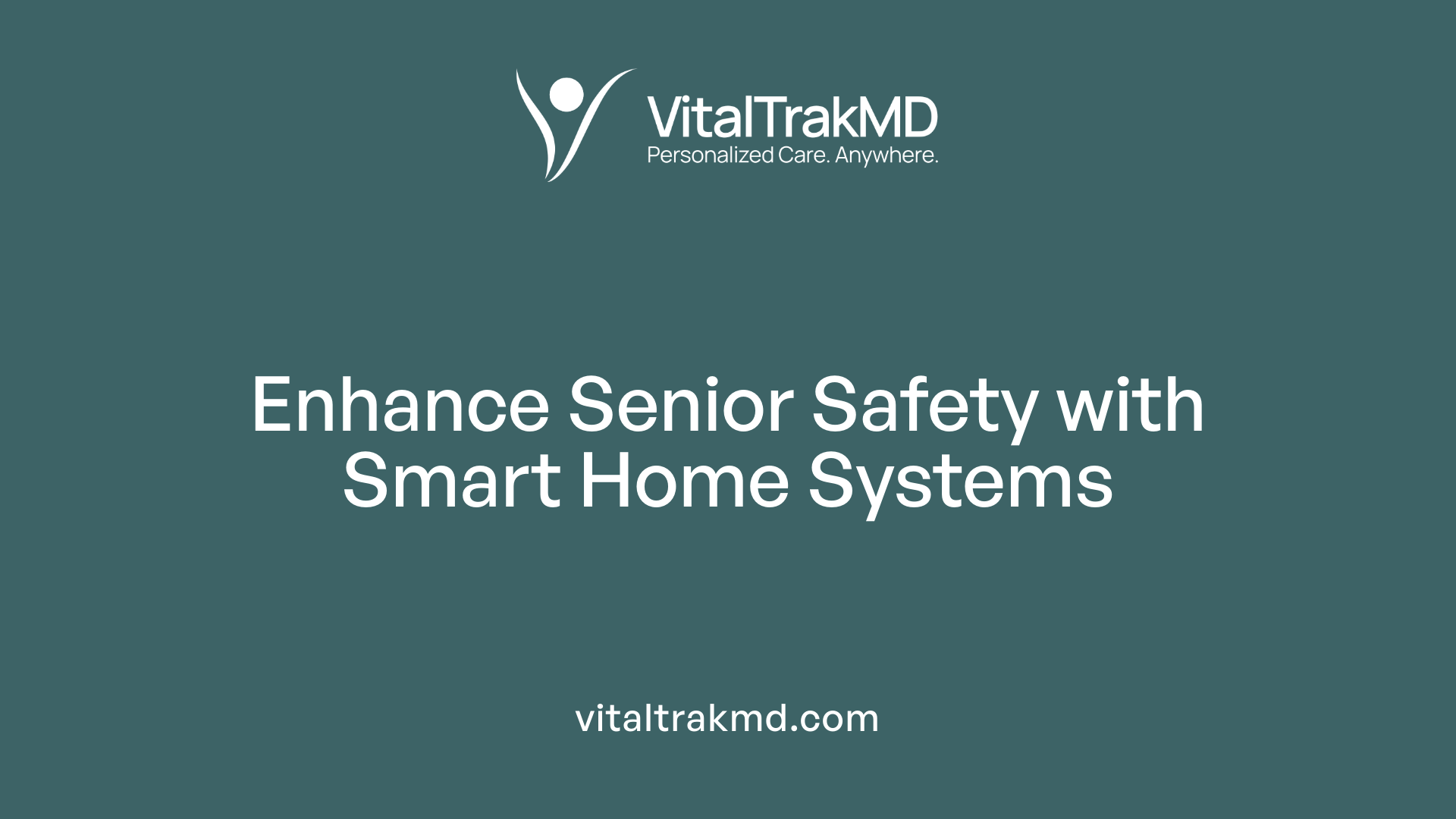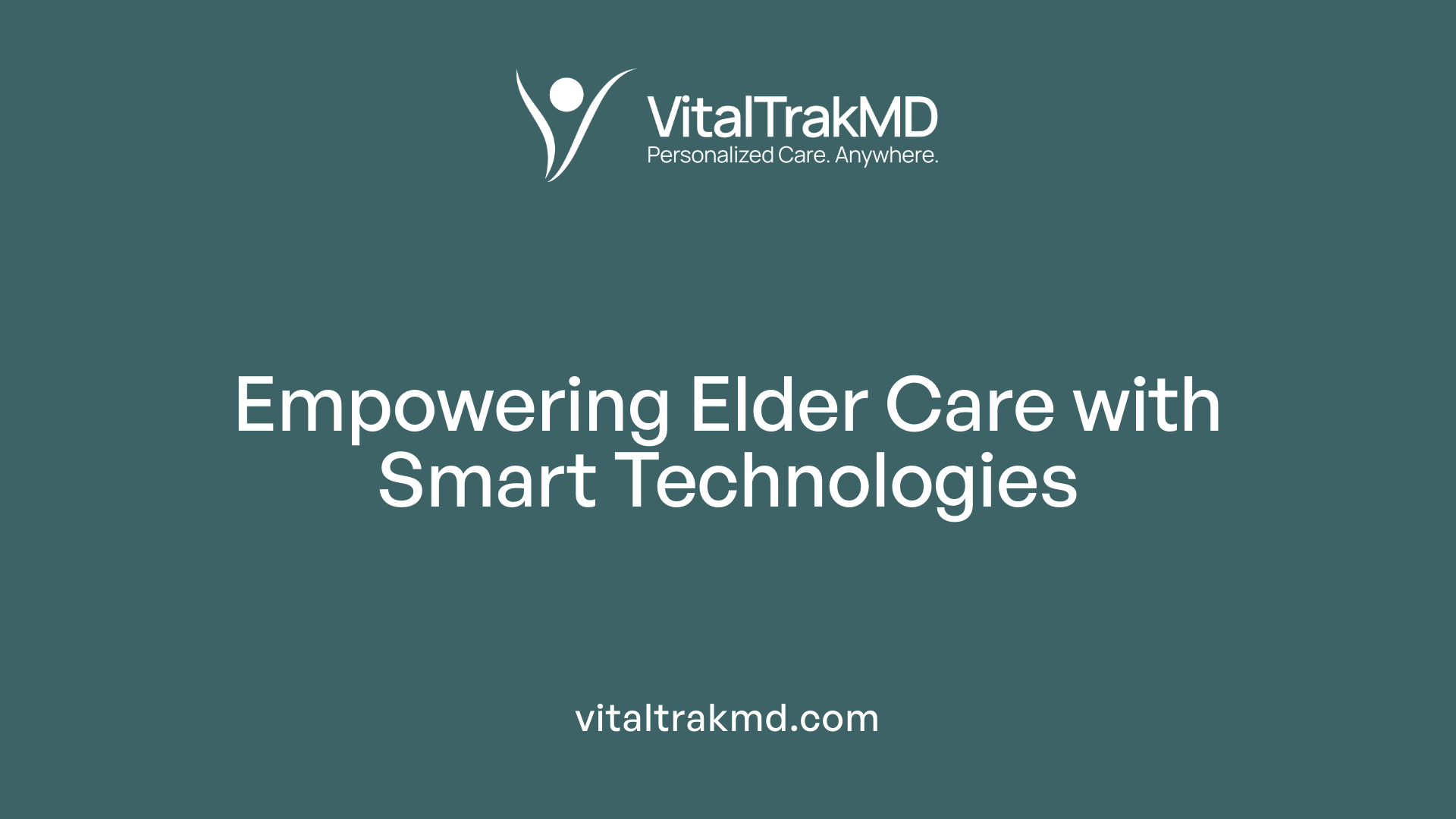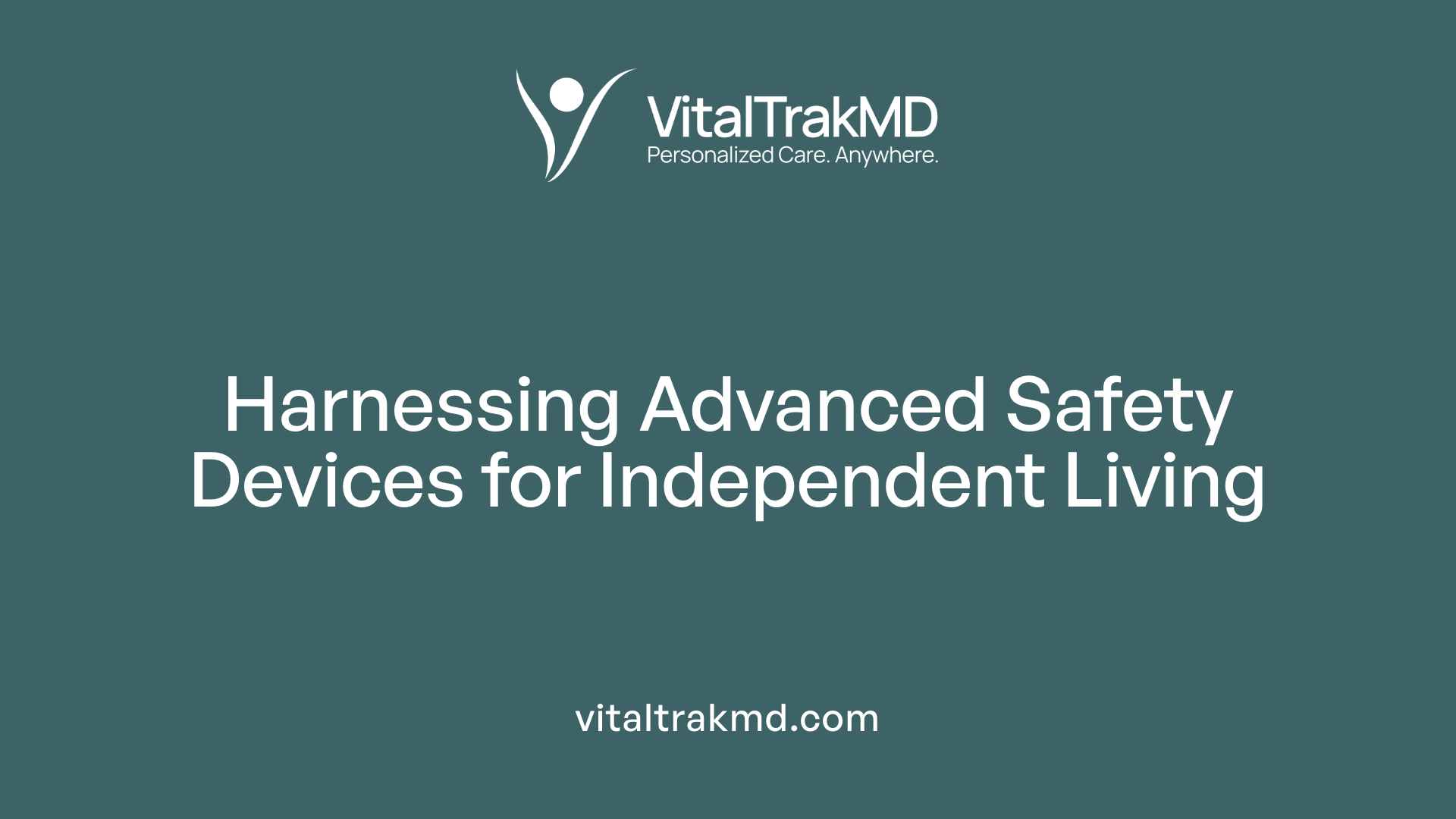How Hybrid Healthcare Promotes Senior Independence While Ensuring Safety

Enhancing Independence and Safety in Aging Populations
As the global elderly population grows, the need for healthcare approaches that support aging in place while maintaining safety has never been more critical. Hybrid healthcare models, integrating traditional in-person care with cutting-edge technological solutions, offer a promising path forward. This article explores how technological innovations—ranging from smart home devices and wearable health monitors to telehealth platforms and assistive robotics—are revolutionizing senior care. By examining the benefits, implementation strategies, and ethical considerations, we illustrate how hybrid healthcare models foster safer, more autonomous living environments for older adults.
The Role of Smart Home and Health Monitoring Technologies in Senior Safety

What role do smart home technologies and health monitoring devices play in enhancing senior safety?
Smart home sensors and Internet of Things (IoT) systems are transforming senior safety at home by continuously monitoring the environment and residents' activities. Environmental sensors detect motion, contact, light, temperature, and humidity, providing unobtrusive oversight that helps identify potential hazards or irregularities in daily routines.
Vital signs monitoring devices, such as smart blood pressure and glucose meters, allow for early detection of health issues. Wearables like fall-detection watches, GPS-enabled devices, and medical alert systems can automatically sense falls or abnormal activity and alert caregivers or emergency responders immediately.
Safety features such as smart locks and security cameras enable secure access and real-time surveillance, reducing risks of intrusions or accidents. Emergency alerts, including voice-activated emergency help buttons and automated notification systems, ensure quick response to urgent situations.
These technologies work together to create a safer environment where seniors can maintain independence with peace of mind. Remote health monitoring supports early intervention, preventing hospital visits and managing chronic conditions effectively.
By automating safety functions and facilitating instant communication, smart home and health monitoring devices empower seniors to live confidently in their own homes while providing families and caregivers reassurance of their loved ones' safety.
| Technology Type | Main Function | Additional Benefit |
|---|---|---|
| Smart sensors & IoT systems | Detect motion, contact, light, temperature | Support unobtrusive safety monitoring |
| Vital signs monitors | Track blood pressure, glucose, oxygen saturation | Enable early health intervention |
| Fall detection devices | Sense falls, alert caregivers | Reduce injury risks and response time |
| Emergency alerts & smart locks | Provide remote access, automation | Increase home security and safety |
Incorporating these technologies greatly enhances the capacity for proactive safety management, allowing seniors to enjoy their independence while minimizing hazards and risks.
Innovative Technologies Supporting Safe, Independent Aging
What are some technological innovations that support senior safety and independence?
A variety of modern technologies are transforming the way older adults maintain safety and independence at home and in community settings. Wearable health devices, such as fall detection watches and GPS-enabled trackers, empower seniors by providing real-time health data, detecting falls promptly, and enabling quick communication with emergency contacts. Devices like the Apple Watch or Fitbit Sense continuously monitor vital signs and can alert caregivers immediately if irregularities or falls occur.
Remote healthcare services, including telehealth and remote patient monitoring, have become essential tools in managing chronic conditions like diabetes and heart failure. These platforms allow for regular virtual check-ins, continuous tracking of health indicators, and early intervention, which reduce hospital visits and support aging in place.
Assistive robots and AI-powered systems are increasingly available to support daily life. Robots can assist with physical tasks and offer social interaction, improving mental health and reducing loneliness. AI-driven predictive analytics tailor interventions to individual needs, helping to spot health risks early.
Smart home technology also plays a crucial role. Environmental sensors detect motion, temperature, and humidity, providing unobtrusive monitoring that supports safety and independence. Automated medication dispensers remind seniors when to take their medications, reducing errors and risks.
Smart lighting, smart locks, and video doorbells enhance security by allowing remote control and surveillance, preventing accidents and intrusions. Voice-activated assistants like Alexa or Google Nest support daily activities such as medication reminders, communication, and task scheduling, making everyday life easier.
Portable safety devices extend support outdoors—GPS trackers with geofencing alert caregivers if seniors stray from designated areas. Devices like the Freedom Alert Max combine fall detection, emergency video calling, and real-time location tracking, offering comprehensive protection.
In addition, virtual reality and digital therapeutics are emerging to promote cognitive health, offering engaging ways for seniors to participate in therapy and mental stimulation.
Together, these innovations create a robust ecosystem that enhances safety and encourages autonomous aging. By integrating these technologies, seniors can enjoy greater control over their lives within secure and supportive environments.
Integrating Technology-Assisted Interventions into Elder Care

What are the benefits of integrating technology-assisted interventions in senior care?
Incorporating technology into elder care offers a range of significant advantages that support aging with dignity and independence. One of the primary benefits is improved safety. Devices like fall detectors and emergency alert systems quickly notify caregivers or emergency responders in case of accidents, reducing injury risks and ensuring swift assistance.
Health management also benefits greatly from technological tools. Telehealth services, remote monitoring devices, and smart sensors enable continuous tracking of vital signs such as blood pressure, blood glucose, and oxygen saturation. This proactive approach helps in early detection of health issues, allowing timely interventions and reducing hospital visits.
Moreover, technology supports seniors in maintaining their independence. Voice-activated home assistants, smart locks, medication dispensers, and automated reminders help older adults perform daily activities, manage their medications, and control their environment easily. Wearable devices like GPS trackers and fall detectors empower seniors to stay safe when outside their homes, fostering confidence in their mobility.
Social engagement is another vital aspect enhanced through technology. Video communication tools, online communities, and virtual reality experiences help reduce feelings of loneliness and isolation, promoting mental well-being. These tools allow seniors to stay connected with loved ones and participate in social activities from the comfort of their homes.
Reducing caregiver burden is also a notable benefit. Remote monitoring, AI-powered assistance, and automation lessen the physical and emotional load on caregivers, enabling them to focus on personalized care and emotional support.
In summary, integrating these technological solutions results in an improved quality of life for seniors. It ensures safety, promotes independence, encourages social involvement, and alleviates caregiver stress, making aging in place a practical and fulfilling experience.
Supporting Aging in Place via Hybrid Healthcare Models
 How can healthcare providers implement hybrid healthcare models to promote aging in place?
How can healthcare providers implement hybrid healthcare models to promote aging in place?
Hybrid healthcare models combine the strengths of in-person visits with virtual care options, creating a flexible approach to support elderly individuals staying in their homes. Providers can use telehealth platforms alongside remote monitoring devices to keep a close check on chronic conditions such as diabetes or heart failure. These technologies enable routine assessments and timely interventions without the need for frequent hospital visits.
Incorporating smart home technologies—like motion sensors, emergency alerts, and medication reminders—further enhances safety and independence. Training seniors and their caregivers on how to operate these digital tools ensures they are used effectively. Personalized care plans, developed with input from the patients and their families, help address specific health needs and preferences.
Community involvement plays a vital role too. Connecting seniors with local services, transportation, and social activities fosters a supportive environment that encourages continuous engagement and reduces isolation.
Implementing evidence-based, Age-Friendly Health System practices—focusing on what matters most, safe medication use, mental health, and mobility—within these hybrid models enhances health outcomes. Policy initiatives and funding support, such as hospital-at-home programs, further facilitate the expansion of these services.
Overall, integrating in-person and virtual care with community support creates a comprehensive, adaptable system that helps seniors live safely and comfortably in their familiar surroundings.
Strategies and Tools in Hybrid Healthcare for Ensuring Safety and Independence
 In hybrid senior healthcare models, a variety of safety devices and strategies are used to create secure environments that foster independence.
In hybrid senior healthcare models, a variety of safety devices and strategies are used to create secure environments that foster independence.
Configurable safety devices play a central role. These include fall detection pendants, door sensors, mattress monitoring systems, pull cords, and help buttons. These tools send real-time alerts to caregivers or monitoring platforms via connected apps, allowing quick response to emergencies.
Continuous health data collection is facilitated through advanced remote monitoring technologies. Sensors that track vital signs like heart rate, blood pressure, and oxygen saturation provide ongoing assessments. Telemedicine platforms enable healthcare providers to review biometric data remotely and intervene early if issues arise.
Personalized intervention plans are crafted based on the collected data. These plans incorporate alerts and adaptive responses, ensuring that each individual receives tailored support that promotes safety and independence.
In addition to devices, hybrid systems involve 24/7 emergency support staffed by trained personnel, ready to act when alerts occur. Configurable alert settings help prevent alarm fatigue by customizing notification thresholds.
Cybersecurity measures and secure digital infrastructures, such as cloud data sharing, ensure information remains confidential and protected.
Overall, integrating these tools and strategies forms a comprehensive safety net. Such systems enable older adults to live more independently, with responsive care that adapts to their changing needs.
Methods and Strategies for Promoting Safe, Independent Aging

What methods and tools are used in hybrid healthcare to promote safe, independent aging?
Hybrid healthcare employs a blend of technologies and care approaches to support older adults in maintaining their independence while ensuring safety. This includes the use of telehealth services, which allow for remote consultations and ongoing health monitoring without needing frequent in-person visits.
Remote monitoring devices are also central to this approach. These gadgets include wearable sensors that track vital signs, detect falls, and provide real-time health data to healthcare providers. Smart home systems, equipped with environmental sensors and IoT devices, automate tasks such as medication reminders, emergency alerts, and activity detection, helping to prevent accidents and identify health issues early.
To complement these tools, digital health interventions like mobile apps for physical activity, cognitive training, and therapy enable personalized and accessible support. Virtual reality and tele-rehabilitation programs are increasingly used to assist recovery and improve mental health.
Balancing in-person and virtual care is another crucial aspect. Healthcare providers utilize purpose-built digital platforms to coordinate care, monitor patient progress, and facilitate communication. This integration not only improves clinical outcomes but also reduces the workload on caregivers and clinicians, offering a holistic model of care.
Effective implementation of these methods hinges on thorough patient education and ongoing technological support. Training seniors to use devices confidently and safely boosts adoption and sustained use. Additionally, personalized care plans and user-centered designs ensure that technological interventions are accessible and practical for individual needs.
In summary, hybrid healthcare combines telehealth, remote monitoring, smart-home automation, and personalized digital interventions to foster aging in place—helping seniors live safely and with autonomy.
Fostering Safe and Independent Aging in a Digital Era
The integration of innovative technologies within hybrid healthcare frameworks offers a transformative pathway for aging populations. By combining smart home devices, wearable health monitors, telehealth services, and assistive robotics, care providers can create environments that are both safe and conducive to independence. These advancements not only reduce risks associated with falls, health emergencies, and social isolation but also empower seniors to live fulfilling lives in familiar surroundings. As healthcare systems continue to adopt these digital solutions, addressing ethical considerations such as privacy and equitable access remains crucial. Ultimately, hybrid healthcare models hold the promise of supporting dignified, autonomous aging—ensuring seniors retain control over their lives while enjoying optimal safety and well-being.
References
- Exploring the Effectiveness of Technology-Assisted ...
- How Technology Supports Seniors' Independence and ...
- Can Smart Home Technologies Help Older Adults Manage ...
- How Home Health Care Promotes Independence and Well ...
- Empowering Aging: How Technology Enhances ...
- How Technology is Revolutionizing Safety, Independence ...
- Balancing Independence & Safety for Seniors at Home
- Healthcare's Future Is a Hybrid Model
- Harnessing digital health interventions to bridge the gap in ...
- What Is Hybrid Healthcare? | Tools, Benefits, and Solutions
Recent articles
Want to Feel Better and Live Healthier?
Join hundreds of patients taking control of their health with personalized care that fits their life – not the other way around.
Rated 4.8/5 by 32+ customers







